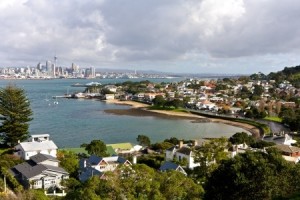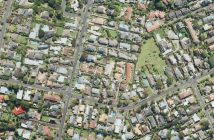Auckland Council has published the recommendations provided by the Independent Hearings Panel on the new planning rulebook for Auckland, the Auckland Unitary Plan which has been embraced and questioned by a number of property groups, businesses and employment bodies.
The Panel’s report sets out detailed recommendations on the final shape of the Proposed Auckland Unitary Plan, notified by Auckland Council in September 2013.
The recommendations take into account over 13,000 submissions, 10,000 pieces of evidence and 249 days of hearings over the past two years.
Decisions on the Panel’s recommendations will be made by the council in meetings open to the public from 10 to 18 August, with the decisions publicly notified on 19 August.
The Unitary Plan aims to provide a single set of rules to manage how Auckland’s housing and infrastructure develops over the coming decades. It will also ensure that future growth is balanced.
Auckland Council’s director of regulatory services, Penny Pirrit says: “From our initial assessment, it’s clear that the Panel has endorsed and retained much of what was included in the council’s proposed Unitary Plan, along with many aspects of the evidence presented by the council and other submitters at hearings.
“Overall, the Panel recommends that growth within Auckland’s urban areas be focused around town centres, transport hubs and corridors, along with an expansion of the Rural Urban Boundary to open up more new land for development as the city grows.”
Among the many issues covered, the Panel’s report includes recommendations that the Panel says aim to:
- Focus urban growth on centres, transport nodes and corridors to achieve a quality compact urban form
- Retain the Rural Urban Boundary but expand it to include 30 per cent more land and enable it to be changed by private plan changes
- Enable a development pattern to meet demand for the next 30 years and double the feasible enabled residential capacity to exceed 400,000 dwellings
- Ensure sufficient capacity for the next seven years
- Enable the growth and development of new or existing rural towns and villages
- Provide live residential and business zonings for some developments on the edge of existing urban areas.
The full set of recommendation reports and the Panel’s recommended version of the Unitary Plan is available to view at www.aucklandcouncil.govt.nz/unitaryplan
Property Institute says Unitary Plan recommendations go too far
Property Institute of New Zealand chief executive, Ashley Church, says that a range of very positive recommendations in the Auckland Unitary Plan Independent Hearings Panel final report have been completely overshadowed by a number of bizarre and divisive recommendations which ‘must be resisted at all costs’.
Mr Church has applauded widely anticipated recommendations around intensification and a revised target of 400,000 new dwellings over the next 30 years, a greater focus on metropolitan centres as a counter to the growing importance of the CBD, and the extension of urban growth boundaries to cater for this growth. He says that these proposals are worthwhile and would be strongly supported in many quarters. But he goes on to says that, having made these recommendations, the Panel then seems to have gone out of its way to offend as many people and groups as possible.
“I think most reasonable people knew that the document would outline the necessity of much greater intensification – but expected that to be balanced by a strong commitment to the protection of heritage and culture, requirements to maintain and enhance lifestyle facilities and amenities, and a very strong focus on the need to maintain quality and standards at all levels.”
“Instead, we have a document that appears to be so obsessed with the development of new dwellings that it is prepared to forgo the things which have made Auckland into the world’s 3rd most livable city.”
Mr Church points to recommendations to delete building demolition controls for pre-1944 houses and to delete the Schedule of sites of value to Mana Whenua as ‘unnecessary acts of cultural vandalism’.
“These recommendations add nothing to the proposed document and any perception that they might somehow speed up the development process is naïve and misplaced. Yet their application would progressively rip the soul out of the city on the altar of expediency.”
“The recommendation that Sites of Value to Mana Whenua should be disregarded until the ‘evidential basis of their value has been assembled’ is particularly offensive and appears to pander to a small but vocal element rather than the wider interests of the city.”
Mr Church says that Aucklanders have a right to expect that the plan setting out the growth of their city should be underpinned by a strong commitment to quality, liveability and respect for the past.
“If it doesn’t achieve those things – what’s the point?”
Unitary Plan changes are what Auckland needs
Harcourts CEO Chris Kennedy says the lack of housing supply in Auckland has driven prices up significantly over the last several years.
“Increased migration has enabled our economy to thrive. However, it has also left our biggest city unable to house everyone who wants to live here.
“We are not going to stop immigration. Realistically, we are not going to be able to stop people buying investment properties.
“We need more houses. Intensification is necessary, and is nothing to be feared as long as it’s done well. All the major cities of the world have large chunks of mid-density and high density housing,” Mr Kennedy says.
Auckland’s house prices have risen furiously over recent years. In June the average house sold for $909,733, a huge 10 percent jump on the previous year.
Total new listings, by comparison, dropped by five percent.
Mr Kennedy says this trend of ever diminishing supply and resulting price hikes has led to our current housing crisis, and “band aids” like LVR restrictions have not been able to buck the trend.
“Today’s recommendation that 422,000 new dwellings be provided for over the next 30 years, with expansion of the urban boundary and more intensification, is – at first sight – good news.
“Change can be scary. But we have to accept the fact that Auckland is changing. We can either be prepared for it, or continue to flounder.
“And while the full consequences have yet to become apparent, this is a bold move that looks just like what Auckland needs. Let’s embrace the change.
“We must hope that Auckland Council is bold in its approach to these proposed plans and we can start working towards a more successful city.”
Image Copyright: <a href=’http://www.123rf.com/profile_instinia’>instinia / 123RF Stock Photo</a>




